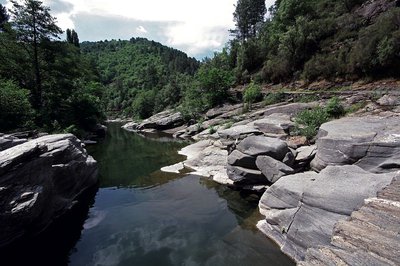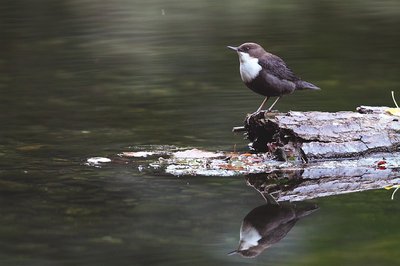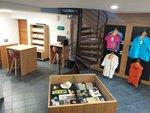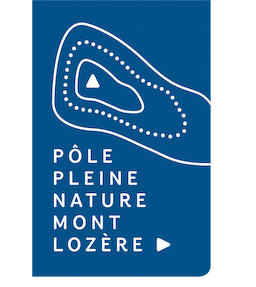
The ford at Hiverne
4 points of interest

 History
HistoryLes Pauses hamlet
At one time, this hamlet welcomed peddlers, shepherds and walkers in its handsome inn on the edge of the track. The inn was also where the prosecutors from Villefort held their public court sessions in the 18th century. One day, 30 inhabitants attending one of these sessions “asked” the prosecutors to “pack up and go and not seize any property”...”A great uproar followed'! (B.Mathieu)

Lézard des murailles jeune - © Bruno Descaves  Fauna
FaunaThe walls
The wall of Salveplane merits a short series of naturalist observations. You might be tempted to believe that the lively wall lizard is the only inhabitant of these stone walls. But he has many housemates. First, there are his cousins, such as the western green lizard or ocellated lizard. Field mice and other rodents like to squat cavities, and stock their merchandise in this wall or give birth here so as to ensure their line does not die out despite being threatened by all the area's predators. In the winter, all these small creatures withdraw into the wall's holes... (B. Mathieu)

Le Luech - © Yannick Manche  Landscape
LandscapeThe Cézarenque
You are at the heart of the Cézarenque, a small and welcoming region bordered on three sides by mountain ranges. Three rivers (the Cèze, Luech and Homol) water the area, which is crossed by large tracks joining up with the Regordane Way to the north. The “val cezrencha" was given its name in 1270 and covers a steep-sided basin of about 80 sq km. It consists of three valleys closed off by secondary mountain ranges and is only open to the south-east, at Peyremale. Here, the Luech and Homol flow into the Cèze, which continues on to the Mediterranean. The varied bedrock makes for very different landscapes, offering you ever-changing panoramic views. (B. Mathieu)

Cincle plongeur - © Régis Descamps  Fauna
FaunaThe white-throated dipper (Cinclus cinclus)
Have a close look at the banks and the rocks that stick out of the current. You may see a white-throated dipper with its vanilla-coloured breast, brown head and plump body. It is also known as the European dipper. It finds its pittance by diving and then walking upstream on the riverbed, snacking on small larvae and tiny crustaceans. It is very sensitive to water quality. The dipper is the soul of any waterway.
Description
Signposts will guide you all along this route. In the description below, the signposted place names and/or directions are given in bold italics between quotation marks:
From “Aujac”, walk to :
- “Les Bouschets” via “l’Habitarelle” x2,
- “Les Pauses”,
- “Combemale”
- “Ravanis”.
- At “Les Bouschets” go to “Salveplane”.
- Then walk to “Charnavas” via :
- “Le Bartrasse”,
- “Pont d’Hiverne”,
- “Font de Peire Fabre”
- At “Charnavas” return to “Aujac” via :
- “La Brugarède”.
This hike is taken from the guidebook Mont Lozère – Pays des sources, Sommet des Cévennes, published by the Pôle de pleine nature du Mont Lozère.
- Departure : Aujac
- Arrival : Aujac
- Towns crossed : Aujac, Sénéchas, and Concoules
Forecast
Altimetric profile
Recommandations
This trail cannot be used by mountain-bikes. In bad weather or after strong rain, be careful at the ford over the Cèze (strong current). Steep section at the end of the loop.
Make sure your equipment is appropriate for the day's weather conditions. Remember that the weather changes quickly in the mountains. Take enough water, wear solid shoes and put on a hat. Please close all gates and barriers after yourself.
Information desks
Tourism'house and national parc, Génolhac
Place du Colombier, 30450 Génolhac
This office is part of the National Park's associated tourist-information network, whose mission is to provide information on, and raise awareness of, the sites and events as well as the rules that must be observed in the National Park's central zone.
Open from april to october
Access and parking
From Génolhac, take the D 906 towards Villefort, then the D 155 towards Le Martinet, D 318a towards the Col de Charnavas pass and D 134 to Aujac.
Parking :
Calculateur d'itinéraire Lio
Utilisez le calculateur liO pour organiser votre trajet en région Occitanie.
Autres régions
Calculez votre itinéraire en Auvergne Rhône Alpes sur Oùra
Biodiversité autour de l'itinéraire
Source

Report a problem or an error
If you have found an error on this page or if you have noticed any problems during your hike, please report them to us here:


